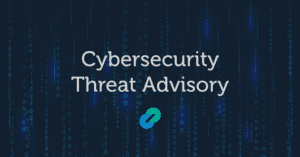 A new skilled and clever “File Archiver in the Browser” phishing trick that utilizes ZIP domains has surfaced. Bad actors can employ this technique to deceive users into downloading malicious files, compromise systems, and potentially gaining unauthorized access.
A new skilled and clever “File Archiver in the Browser” phishing trick that utilizes ZIP domains has surfaced. Bad actors can employ this technique to deceive users into downloading malicious files, compromise systems, and potentially gaining unauthorized access.
What is the threat?
This threat involves bad actors utilizing deceptive domains with a ZIP extension to host phishing pages. These pages are designed to mimic legitimate websites, enticing users to enter their credentials or download malicious files. The attackers take advantage of modern browsers treating ZIP files as archives and allow users to preview their contents without downloading. By embedding HTML files within the ZIP archives, they can execute malicious scripts directly to the user’s browser.
When a user visits a ZIP domain, they are presented with a seemingly harmless preview of the files contained within a fake WinRAR Window. Upon interaction with these files, the embedded scripts can initiate various malicious activities, such as redirecting the user to a fake login page, injecting malware into the victim’s system, or even initiating a full-fledged exploit chain to compromise the device.
Why is it noteworthy?
This phishing technique is noteworthy because it leverages the familiarity and trust associated with ZIP files to deceive the users. By presenting a preview that mimics the legitimate website or service, it increases the likelihood of users falling for the scam. Moreover, since the attack takes place within the user’s browser, it can bypass many traditional security measures, making it harder to detect and mitigate.
What is the exposure or risk?
The risk posed by this threat is significant for both individuals and organizations. Individuals who fall for these phishing campaigns may inadvertently disclose their credentials, leading to unauthorized access to personal accounts and potential identity theft. For organizations, if employees interact with these phishing pages, it could compromise corporate networks, leak sensitive information, or provide attackers with a foothold for further exploitation. Moreover, traditional security solutions such as email filters may not be as effective in detecting and blocking these attacks, as they occur within the user’s browser.
What are the recommendations?
Barracuda SOC provides the following recommendations to mitigate the associated risks:
- Exercise caution when interacting with ZIP files from unfamiliar or suspicious sources, especially if they prompt you to enter login credentials.
- Verify the legitimacy of websites and login pages before entering sensitive information. Look for indicators such as HTTPS encryption and familiar domain names.
- Regularly update and patch browsers, as newer versions often include security enhancements and mitigations against emerging threats.
- Educate employees about the risks of phishing and the specific techniques attackers are currently using. Promote a culture of skepticism and encourage reporting of suspicious emails or websites.
- Continuously monitor and analyze network traffic for indicators of compromise, suspicious activity, or employing tools like intrusion detection and prevention systems.
- Regularly back up critical data and systems to mitigate the impact of potential breaches or ransomware attacks.
- Stay informed about emerging threats and vulnerabilities through trusted sources to proactively adapt security measures.
By following these recommendations and maintaining a vigilant approach to cybersecurity, organizations and individuals can enhance their resilience against this evolving phishing threat and minimize the potential for compromise.
References
For more in-depth information about the recommendations, please visit the following links:
- https://www.bleepingcomputer.com/news/security/clever-file-archiver-in-the-browser-phishing-trick-uses-zip-domains/
- https://thehackernews.com/2023/05/dont-click-that-zip-file-phishers.html
